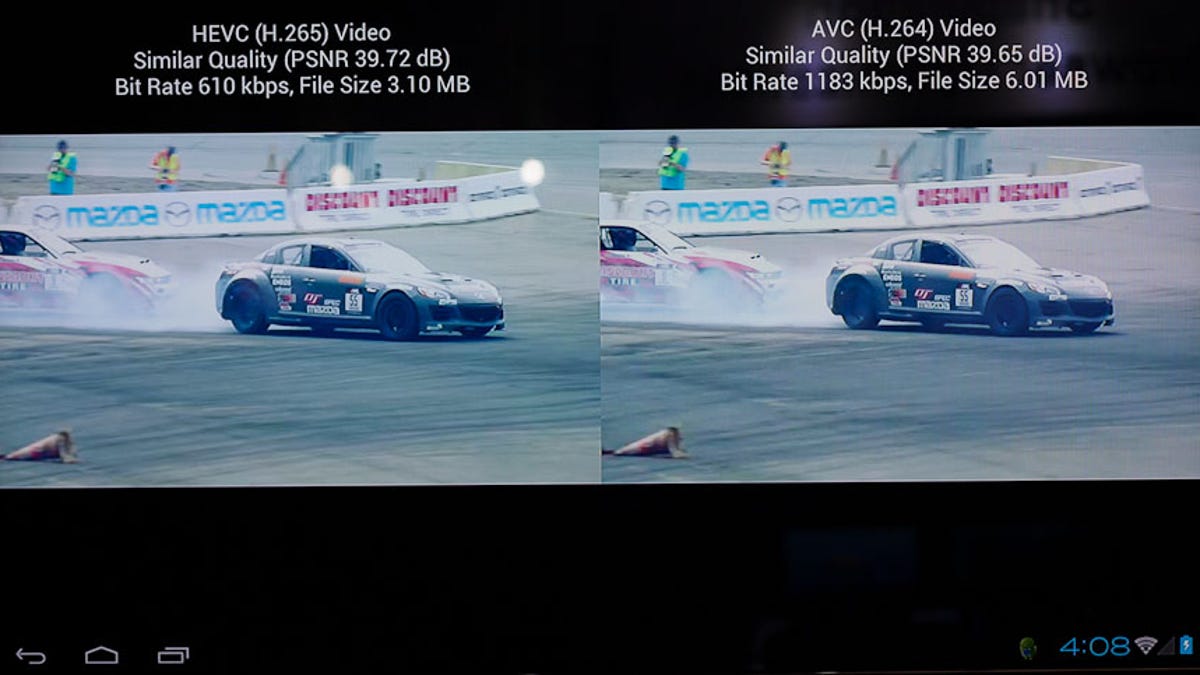Qualcomm shows horsepower of next-gen H.265 video
The next-gen video compression technology shrinks video by 40 to 45 percent compared to today's prevailing H.264. But encoding H.265 video takes a long time right now.

BARCELONA, Spain--H.264 is today's leader when it comes to mainstream video encoding technologies, but it will have to share the stage in 2013 with a successor called H.265 that can squeeze a video into nearly half the file size.
H.264, also known as the Advanced Video Codec (AVC), defines how a video can be compressed for reduced storage requirements and--very importantly given the online video explosion--for streaming across networks. H.265, also called High Efficiency Video Codec (HEVC), uses new techniques to compress video even more.
Qualcomm, a San Diego-based chipmaker that's on the international standards group developing H.265, demonstrated a preliminary version of H.265 video on an Android tablet at the Mobile World Congress show here in Barcelona.
The H.265 codec is likely to gain widespread support, but it and H.264 competes with a royalty-free alternative called VP8 that Google has released. Qualcomm competitor Nvidia has built VP8 decoding support into its newer Tegra 3 chips alongside H.264 support.

